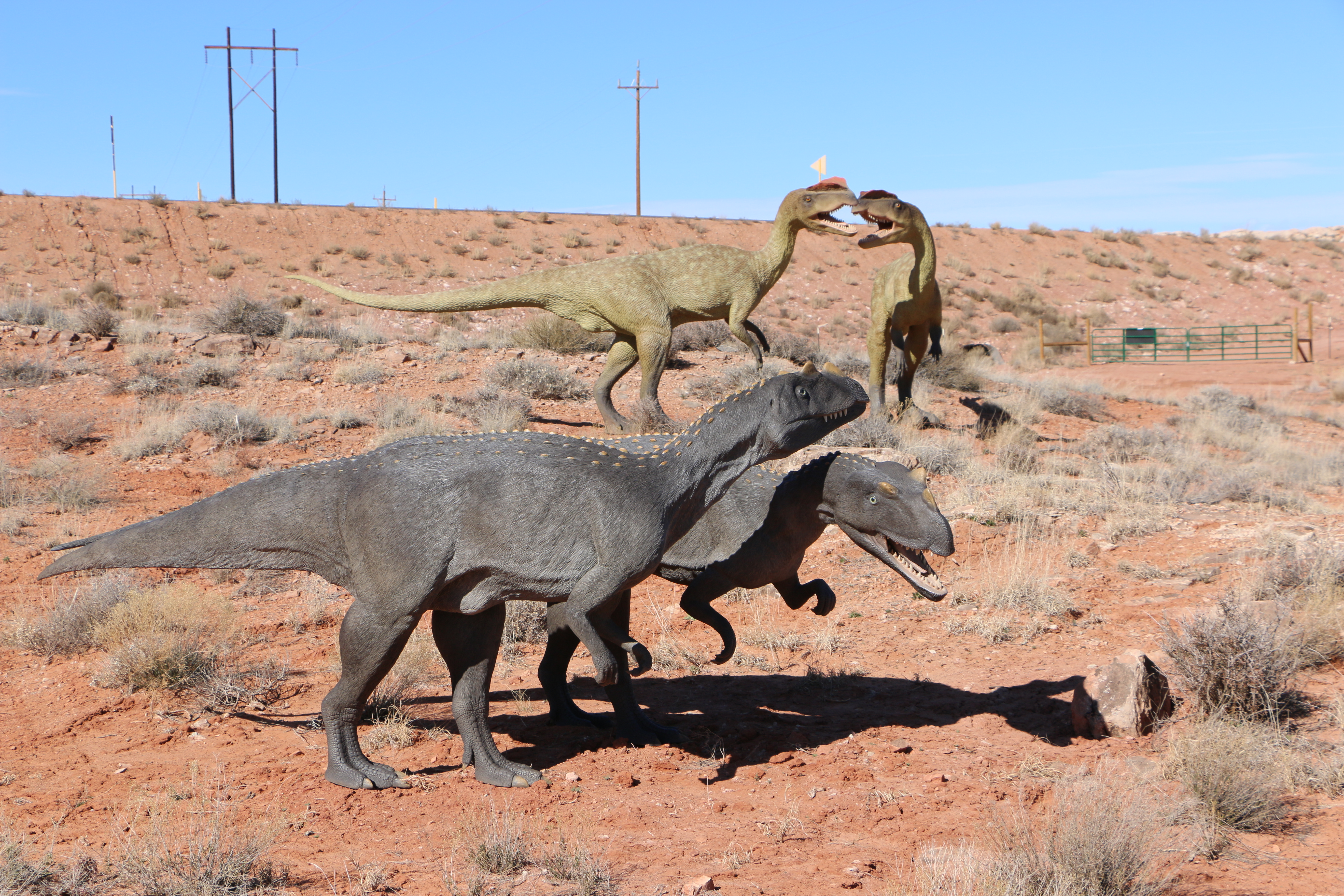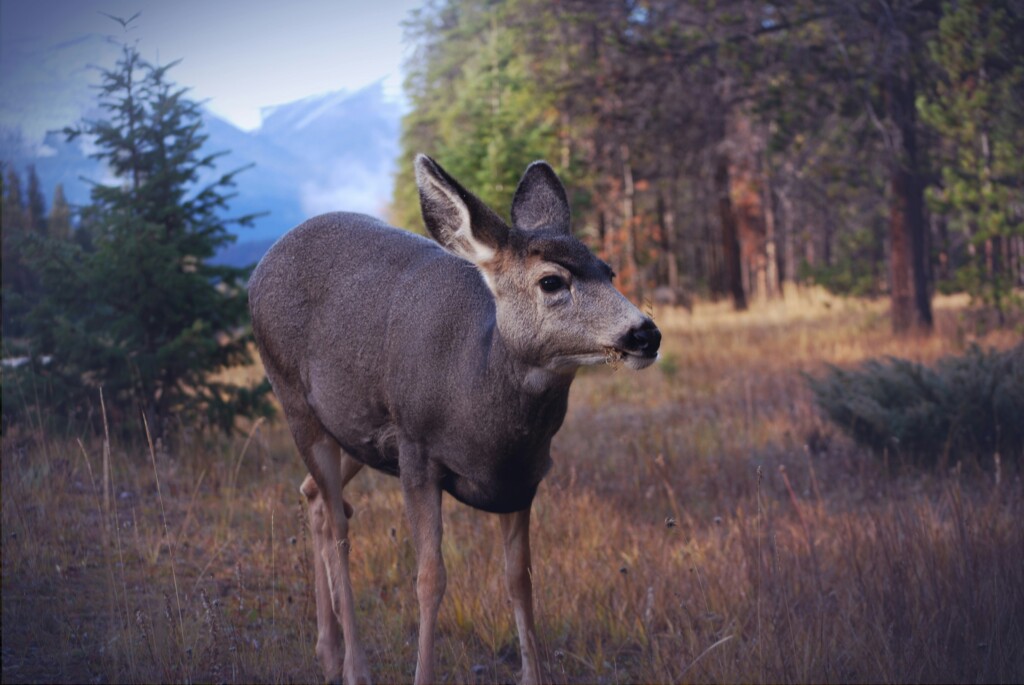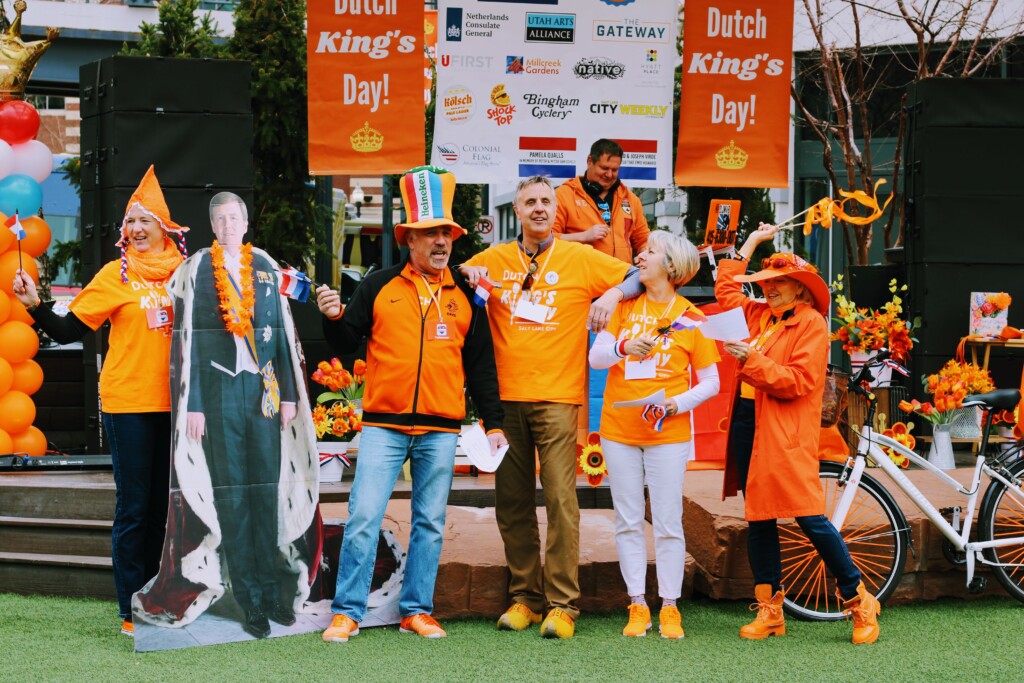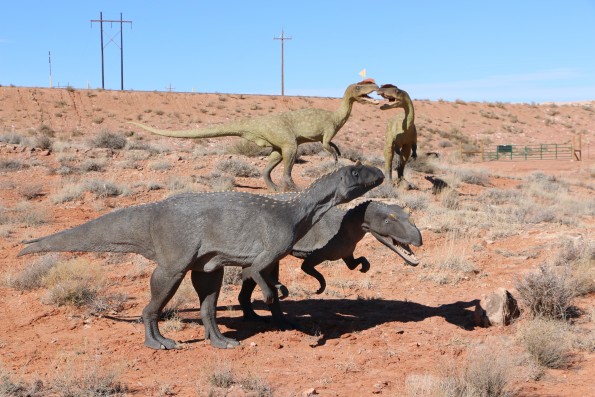
The oceanfront property, in the area we now know as Moab, was once occupied by Utah’s wealthiest raptors, brontosauruses and stegosauruses. But time and climate change was transforming it from one the most valuable pieces of real estate into a slum.
In addition to a receding coastline, the jungle was dying. The brontosauruses’ insatiable appetite caused the jungle’s deforestation. Food was becoming scarce and the giant pterodactyls were swooping down from the sky scavenging on the remains of the dead and dying dinosaurs.
At about this same time (plus or minus a few million years) a volcanic eruption caused yet another dramatic climate event, and the winds of change blew. Seeking a new home, the dinosaurs embarked on a massive migration. By the hundreds, different dinosaur species walked, pranced, galloped and crawled along the coast to avoid the predators lurking in the still dying jungle.
Soon after they left their footprints in the coastal sand, a ferocious wind kicked up, depositing a thin layer of dust over their tracks. This dust preserved the prints for the millions of years and then layers upon layers of sand and sediment accumulated on top of that. The dinosaur population would eventually be annihilated when the earth was struck by an epic asteroid, changing the planet’s atmosphere and climate, thus ending the age of dinosaurs.
We might never have known about this dinosaur migration but for millions of years of rain storms, wind erosion, earthquakes and scorching sun slowly dissolving away the sediment to eventually reveal the pristine prints which tell their story…. (Scientists, forgive me for embellishing the tale a bit.)
Why Study Tracks Instead of Bones?
“There are far more dinosaur tracks preserved than bones,” says Moab Giants Director Darek Gazdzinski. “There are thousands of species of dinosaurs we know of from their tracks, without any record of their bones.” We can learn a lot more by studying the tracks than the current knowledge we have from their skeletons,” Gazdzinski said.
And these stories are unfolding to a greater degree of accuracy and detail than ever before, thanks to the efforts of geologists teaming up with paleontologists studying dinosaur tracks. Most of this work happens at universities, but now it’s beginning to occur more in private industry.
Dr. Martin Lockley (paleontologist) and Dr. Gerard Gierliński (paleontologist) teamed up with investors who initially opened three Jura Parks in Poland. Their ability to generate excitement over the science telling the dinosaurs’ stories is the reason why Jura Parks in Poland are so popular.
Moab is their first United States location, and the team plans to open several more parks in other locations around the world. Each park’s exhibits are specific to the surrounding area’s unique geographic and dinosaur history. The opening of the park in Moab was no small feat.
“It took us around five years to convince [Grand] County that what we were intending to build was not roller-coasters and cheap Chinese models,” said park director Darek Gazdzinski. Eventually the county saw the plans and the way that the buildings would fit nicely with the landscape, and finally gave approval. Moab Giants is a $10 million project, constructed 15 miles outside of town. The park has nine attractions including a paleo camp, 3D theater, trails, museum, dig out sites for kids and a restaurant.
Unlike any other dinosaur museum in the country, Moab Giants operates under a for-profit model. “We didn’t want to seek the financial support of businesses or taxpayers. Instead,” Gazdzinski says, “they believe that, like in Poland, visitors will come to experience the real story of the dinosaurs and enjoy the attractions and exhibits with their families.” Ticket prices range from $10 to $18 depending on how many attractions visitors choose to see. Prices will increase to $22 when the paleoaquarium is finished.
Outside of the museum, there is a winding pathway with re-creations of the creatures that roamed Moab during the Triassic, Jurassic and Cretaceous periods, collective time periods which span over 165 million years. The dinosaurs we see died 65 million years ago, but the time-span in which they existed is a total of 165 million years. By contrast, humans have lived in North America for 14 thousand years. It’s unfathomable how microscopic human history is when examined on this scale.
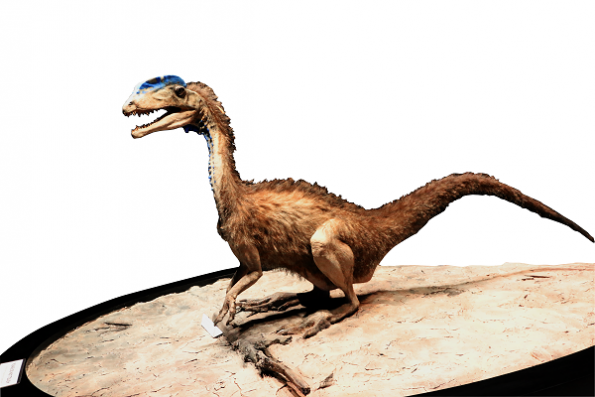 Punk Rock Dinosaurs
Punk Rock Dinosaurs
The Tracks Museum showcases one dinosaur that looks like a bird-hybrid version of the ones I’m familiar with. I learn at Moab Giants that dinosaurs were not the lizard-looking creatures as they are often depicted in films, but most of them had a much closer resemblance to birds with a variety of feathers and colors. “We have known that they have had feathers for more than twenty years.” The tracks of dinosaurs show that when they sat, they had feathers on their rear ends. When they laid down, feathers imprinted into the sand. For this reason, Dr. Gierliński, one of the premier paleontologists in the US, would not agree to offer his expertise for the first Jurassic Park film. “Only after Spielberg agreed to put feathers on some of the dinosaurs did he agree to become a scientific consultant in Jurassic Park II.”
When Will Jurassic Park Become A Reality?
Speaking on that subject I had one final question. “So when will you sequence the DNA for dinosaurs and exhibit real life animals here?” Scientist actually have all of the technology and science needed to produce dinosaurs. The DNA of dinosaurs is already dormant in the genes of animals who live on the planet today. All that is needed is to turn on those dormant genes and we could start producing dinosaurs. But ethically is that the right thing to do? Do we really want dinosaurs to return?
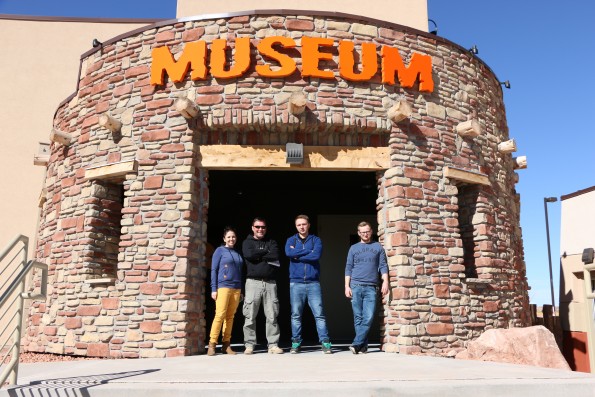
That’s a question we can have our children and grandchildren answer. There was a tiny slice of time in the 260 million year history when dinosaurs went extinct and humans lived. Perhaps the the question was answered incorrectly.

